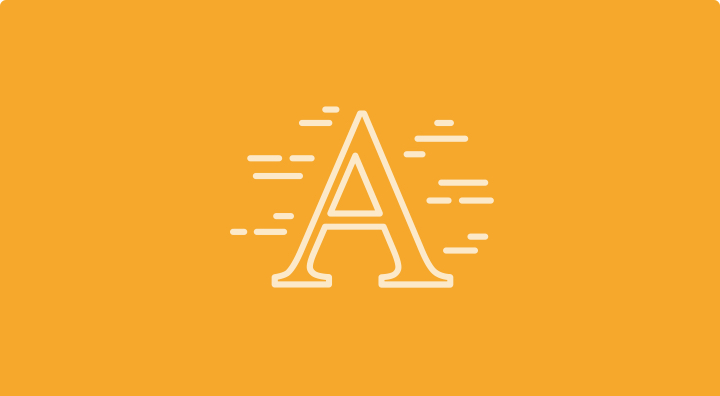Teaching English Language GCSE allows you to discuss real issues with your students. By reading and analysing a range of texts, both fiction and non-fiction, you can encourage your tutees to be critical of the ways writers are attempting to position them. These methods can then be used in their own writing so that they become confident and creative communicators.
This is an exciting prospect – you are empowering young people to develop their ideas about the world – but it can also be daunting due to the broad nature of the subject. This issue is compounded by the fact that the new GCSE for English Language is going to be examined for the first time this summer, so there are fewer resources available to help you with your tutorials. However, once you have done some research, you should use this as an opportunity to deliver tutorials based on the interests of both you and your students.
Preparing for your first tutorial
The first step to prepare for your tutorial is to identify which exam board your student is sitting; this will help you prepare your students appropriately for their exam. Below, you will find a summary of the key changes to English Language GCSE, together with a breakdown of the syllabus alterations for the three main exam boards.
Next, read the specification published by their exam board and look through the specimen papers to get a more detailed picture of what your student will be asked to do. The specimen papers also come with mark schemes and ‘indicative content’ which summarise the kind of ideas students should include in their answers. Looking through these will help you outline the kind of answers the exam boards are looking for to score top marks. All of these resources can be found on the exam boards’ websites, and are linked to below.
You can use these documents to produce your own ‘model’ answers which you can show to students to indicate how to structure their ideas to achieve the best possible marks. This will also allow you to step into your students’ shoes and highlight the kind of problems they might face, which you can then help them to avoid.
When you have a good understanding of the exams your students will be sitting, you are ready to start planning your tutorials. Students will be assessed on their ability to analyse and create texts: both exams they will sit for English Language GCSE contain reading and writing tasks, mostly based on the same theme. I like to focus on a different theme each tutorial using relevant reading and writing tasks.
Students will be assessed on their ability to analyse and create texts: both exams they will sit for English Language GCSE contain reading and writing tasks, mostly based on the same theme.
Plan for your tutorials by compiling a list of key themes, such as the environment, holidays, conditions in prisons, education, sexism etc. Next, select one or two texts based on these issues and find interesting extracts that could be explored which are suitable for the kind of questions on your students’ exam papers. Consider the areas of the text you would want your students to analyse and think about how a discussion might pave the way for this before writing some relevant exam-style questions. Finally, produce a writing task linked to these extracts for students to complete in the tutorial or for homework, as necessary.
Resources
As you will see in the ‘Overview of key changes to English Language GCSE’, English Language exams now contain more challenging texts than they have done previously: texts are from the 19th-21st centuries and from a wider range of genres. Therefore, selecting extracts to use for tutorials has become slightly more difficult.
In the first instance, use what you have around you, particularly for texts from the 21st century. Use articles both in print and online from high-quality, broadsheet newspapers (tabloids, while fascinating from a language perspective, will not have the required level of challenging vocabulary). You can also find appropriate fiction extracts from novels you have read.
use what you have around you, particularly for texts from the 21st century. Use articles both in print and online from high-quality, broadsheet newspapers
Searching for extracts from the 19th and 20th centuries is a bit trickier. If you’re an English student or have studied English at A-level, use extracts from texts you yourself have studied. Museums and libraries have a range of useful material available online: the British Library have a section on ‘Texts in Context’ which provides a list of key themes with links to items from their collection. The transcripts of these items could be used in tutorials. It might also be useful to borrow from the library or buy an anthology containing extracts from the 19th-21st centuries. Particularly useful volumes are 19th Century Fiction and Non-fiction and 20th and 21st Century Fiction and Non-fiction, both edited by Christopher Edge.
FAQs
What should I do if my student doesn’t understand the vocabulary in an extract?
Don’t tell them the answer straight away, as this won’t prepare them for the reality of the exam. Encourage your student to guess the word’s meaning based on its context or derivation before giving them the answer. Make sure your student remembers its meaning by testing them on it in the next tutorial.
What should I do if my student doesn’t understand the meaning of a passage?
Discuss which overall issue the passage relates to. Then, help them break it down paragraph by paragraph. What is the key word/phrase of each paragraph? Could it be summarised in a sentence? Or emblemised in an image? Make sure to provide lots of positive reinforcement, as this is a difficult task!
How do I help my students analyse the language and structure of a passage?
Start by helping your student to identify the overall theme of the passage. Next, ask them how the writer has created this impression: what words have they selected? What types of sentences have they used? What viewpoint are they writing from? How have they structured their ideas? Make sure they explain their ideas fully, using the word ‘because’.
My student has no ideas when I ask them to write something. How can I help?
First, reassure them. They are being asked to do an incredibly difficult task: how often are you asked in daily life to suddenly produce a carefully crafted piece on global warming? If they are producing a piece of creative writing, you could help them get into the routine of planning a character, a setting, and a plot (with a beginning, middle and end). Alternatively, if they’re finding it really hard to come up with any ideas at all, help them create one or two characters in full detail that they will then ‘manipulate’ into a plot, depending on the task they are given. This can be good fun: how will Kim and Sam fare in a fire? A robbery? Their first day at school?
If they’re having difficulties with the more ‘transactional’ task (writing to argue or persuade, for example), then help them identify their own viewpoints on a range of issues. Then, get them used to a routine of planning: once they have their overall viewpoint, how can they break that down into 3 smaller ideas, to form their different paragraphs?
My student has great ideas, but their spelling and grammar is poor. How can I help them?
Try to identify any trends in the mistakes your student is making: are they particularly struggling with commas, for example? Then, devote some of your lesson to explaining how to use this element of grammar correctly. Keep an eye on their use of this and see if it improves. Monitor your student’s progress carefully – it will pay off in the end!
What should I do if my student is panicking about the exam?
Start by reassuring them. This is a difficult exam, but everybody in the country is in the same boat, so your student is not alone! You should also encourage them to continue to read widely and develop their own ideas about issues. Suggest your own favourite books as reading material and discuss current affairs as an opening to your tutorials. This will help them to become the critical and confident communicators you are aiming to help them be.
Overview of key changes to English Language GCSE
In 2015, a series of changes to GCSEs were announced. Firstly, some subject specifications were altered. English Language exam specifications have been updated and students will be tested on the new syllabus for the first time this summer (June 2017). While the skills that students need to demonstrate in their English Language exams remain the same, the material they are asked to analyse has become more challenging. Begin by checking out the description of the new syllabus for your students’ exam boards below, and then read the precise specifications for yourself (links below).
Secondly, the way in which exams are graded has changed. Starting from June 2017, English and Maths GCSEs will no longer be graded using the letters A* – G but will be assessed using the new 9-1 system (where 9 is the highest). They don’t translate exactly (so A* does not equal a 9), but a low C (the old ‘good’ pass mark) will be now be a 4 and a high C is equivalent to a 5.
Find out more about the changes to GCSEs.
› AQA
› OCR
› Edexcel


Laura C. studied English Language and English Literature, followed by a Masters in Medieval English Literature, at Oxford University. She obtained her PGCE in English at Bristol University, and is now an English teacher in Cambridgeshire.
Interested in tutoring English Language GCSE? Follow this link to sign up with MyTutor and start tutoring today.




